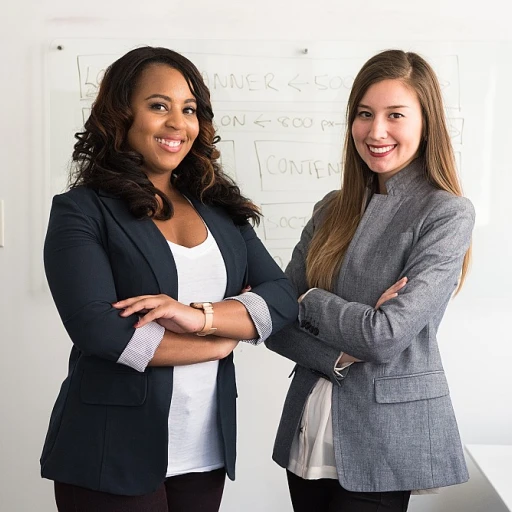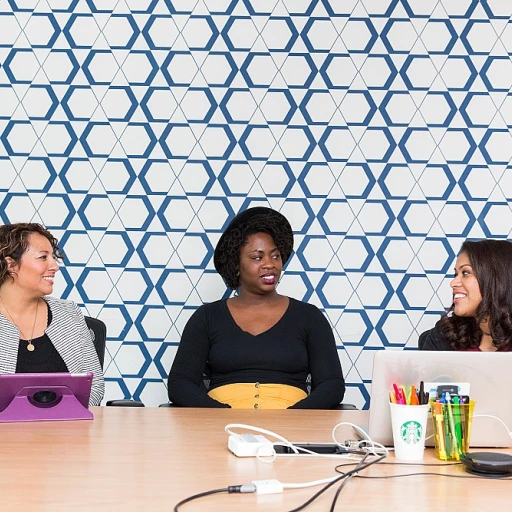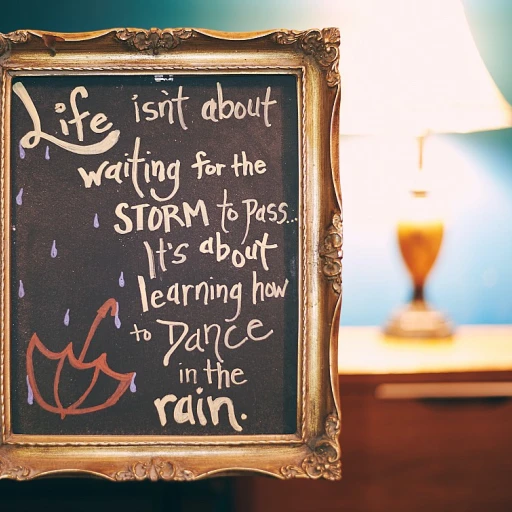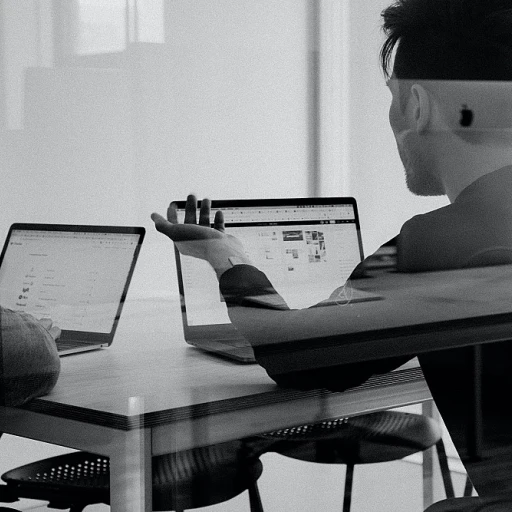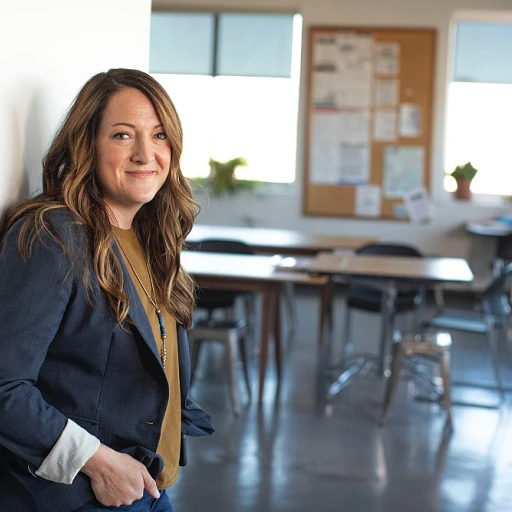
Understanding the Role of Creativity in HR Interviews
The Importance of Creative Thinking
In today's competitive job market, the ability to showcase creative thinking during an interview can set you apart from other candidates. Employers are looking for innovative solutions and problem-solving skills that go beyond the conventional.
Understanding the role of creativity in HR interviews is essential for candidates hoping to stand out. It's not simply about coming up with bright ideas on the spot. Instead, it’s about demonstrating an approach to problem-solving that involves thinking outside the box, presenting creative ideas, and applying innovative solutions to real-world scenarios.
Creative Problem Solving and Innovative Solutions
Creative problem solving is a vital skill in the HR interview context. It involves using your ability to think differently and coming up with innovative solutions to challenging problems. When candidates display this ability, they show potential employers that they can tackle complex issues effectively.
There are several ways to ensure your creative process is highlighted during an interview. For instance, you may be asked to describe a time when you faced a challenging situation at work and how you used creative strategies to overcome it. Preparing example answers ahead of time can help you articulate your experience with clarity and confidence.
Assessment of Creativity in Interviews
Interviewers often use specific interview questions to assess a candidate's creativity. These questions could be hypothetical scenarios requiring you to think on your feet or past experiences where you implemented a creative solution. Your ability to answer these questions effectively can significantly impact the outcome of the interview.
The goal is to demonstrate your skills in creative thinking, problem solving, and your ingenuity in work situations. Well-crafted stories that illustrate your experience can enhance your candidate ability to present yourself as an asset to the company.
Preparing to Showcase Creativity
Showcasing Your Imaginative Potential
When preparing to stand out as a creative candidate in your HR job interview, it's crucial to illustrate your imaginative potential effectively. Creativity in an interview isn't just about giving off-the-wall ideas; it involves demonstrating how you tackle problems with fresh, innovative solutions. A well-crafted approach can showcase your ability to think outside the box while aligning with the company's goals.
Developing a Creative Problem-Solving Approach
To exhibit your creative skills, it's essential to focus on your problem-solving approach. Consider these strategies to prepare for showcasing your creativity:
- Research and Reflect: Understand the common interview questions specific to HR roles and reflect on past work experiences where you utilized creative thinking.
- Analyze Problems: Think of times when you encountered unique problems and how you approached finding solutions. Examples can range from designing innovative processes to implementing new ideas effectively within a team.
- Expand Your Mindset: Engage with creative exercises, such as design thinking, to boost your creative process and develop your ability to view problems from different perspectives.
- Practice, Practice, Practice: Rehearse your answers to refine how you convey your creative problem-solving skills clearly and concisely during the interview.
Articulating Your Answers with Confidence
When it comes to the actual interview, make sure your answers confidently convey your creative thinking. Here’s how to do it:
- Share a Detailed Example: Describe a time when your creativity led to a positive impact. Use the STAR method (Situation, Task, Action, Result) to structure your response, keeping it relevant and engaging.
- Highlight Your Skills: Discuss the skills you leveraged, from brainstorming innovative ideas to implementing a creative solution effectively.
- Connect with the Company: Ensure your creative process aligns with the company's culture and values, demonstrating how you can contribute uniquely to their team.
Remember, the goal is to present your ability to think creatively and solve problems in ways that are original and impactful. By preparing diligently, reflecting on past experiences, and practicing your narrative, you'll be well-equipped to demonstrate your creative prowess in the interview room.
Crafting Your Story: A Step-by-Step Guide
Building Your Story: Crafting a Narrative of Creativity
Creating a compelling narrative is essential when showcasing your creative abilities in a job interview. This involves more than just stating you are creative; you must demonstrate your creative process through structured examples. Here’s a guide to help you master this task:- Identify Relevant Experiences
- Articulate Your Creative Process
- Highlight Results and Impact
- Connect to the Job You’re Applying For
- Practice Your Delivery
Common Pitfalls and How to Avoid Them
Common Missteps to Steer Clear Of in the Realm of Creativity
Navigating the waters of HR interviews with a creative flair involves more than just showcasing your out-of-the-box thinking. Recognizing and avoiding common pitfalls is key to ensuring your innovative skills shine without stumbling over unnecessary obstacles.- Overemphasis on Creativity: While creativity is a sought-after trait, focusing solely on it can blur the overall objective of the interview. Make sure to balance your creative ideas with concrete examples of how they have led to effective problem-solving in past experiences.
- Vague Storytelling: When crafting your narrative, clarity is crucial. A common mistake candidates make is offering abstract descriptions of their creative accomplishments. Instead, design your story to include specific problem-solving instances that highlight your ability to produce innovative solutions.
- Ignoring the Problem: Sometimes, in their eagerness to present creative thinking, candidates overlook the primary problem at hand. Always ensure your creative solution directly addresses the issue posed during the interview.
- Lack of Structure: Creativity thrives within a framework. Utilize design thinking or a structured approach to guide your narrative. This not only showcases your creativity but also your strategic approach to problem-solving.
- Neglecting Practice: Even the best creative minds need to refine their stories. Regular practice hones your ability to deliver a seamless and engaging story that merges creativity with problem-solving skills.
Real-Life Examples of Creativity in Action
Illustrative Examples of Creative Solutions
When considering real-life examples of creativity in HR interviews, one can draw inspiration from candidates who successfully demonstrated their creative problem-solving skills. Here are a few illustrative instances that highlight the power of innovative thinking in action:- Redesigning Process Workflows: A candidate was asked to describe a time when they improved a process at their previous job. The interview question called for an example of creative ideas in problem solving. The candidate successfully narrated how they identified bottlenecks by employing creative thinking. By visualizing the workflow through design thinking techniques, they implemented automated solutions that improved team efficiency.
- Innovative Employee Engagement: During an interview, a candidate was asked how they would maintain high employee engagement levels in a remote work setting. By presenting a creative solution, they suggested virtual team-building exercises, integrating themes that resonated with employee interests. This approach highlighted their ability to think outside the traditional work environment, ensuring creative engagement solutions were tailored to evolving workplace dynamics.
- Creative Product Launch Strategies: When challenged about marketing experience, a candidate's interview answer vividly described a time when they employed creative storytelling—not only utilizing standard metrics but also crafting memorable narratives. The innovative solutions involved harnessing social media platforms to create viral campaigns, reflecting their capacity to adopt an unconventional approach successfully.
Practicing and Refining Your Creative Narrative
Refining Your Creative Narrative
When it comes to HR interviews, the ability to convey your creative problem-solving skills effectively is crucial. After preparing your stories and examples that highlight your creative solutions, the next step is to refine these narratives. This involves practicing how you present these examples during your job interview so that they demonstrate your creative thinking and problem-solving abilities.
First, rehearse your creative process stories aloud. This practice helps in smoothing out any awkward transitions and ensures that your creative ideas and approaches are clearly communicated. By doing this, you can identify potential unclear areas and reorganize your thoughts for better clarity.
Additionally, it is important to time your responses. Being concise is key in an interview setting, where time is limited. Aim to provide answers that are detailed yet succinct, highlighting the innovative solutions you brought to the table without overwhelming your audience with too much detail.
One useful technique is to record your practice sessions. Listening back to these recordings allows you to assess whether your communication is clear and engaging. It also gives you the opportunity to spot any filler words and awkward pauses that can detract from the strength of your message.
In addition, consider seeking feedback from trusted peers or mentors when practicing your creative narrative. They can provide an objective viewpoint and offer insights on how to enhance your storytelling techniques. This feedback loop is a valuable aspect of refining your creative narrative for your HR interview.
Finally, engage in design thinking exercises to further boost your innovative approach. These exercises encourage divergent thinking and can help in generating fresh ideas that you can incorporate into your problem-solving stories. Exploring new methods of creative problem-solving keeps your approach dynamic and relevant in the evolving landscape of HR interviews.
By practicing and refining your narrative, you ensure that your interview answers effectively illustrate your candidate ability to offer creative, innovative solutions. With these refined responses, you'll be ready to tackle interview questions with confidence, showcasing the creativity that can set you apart from other candidates.

